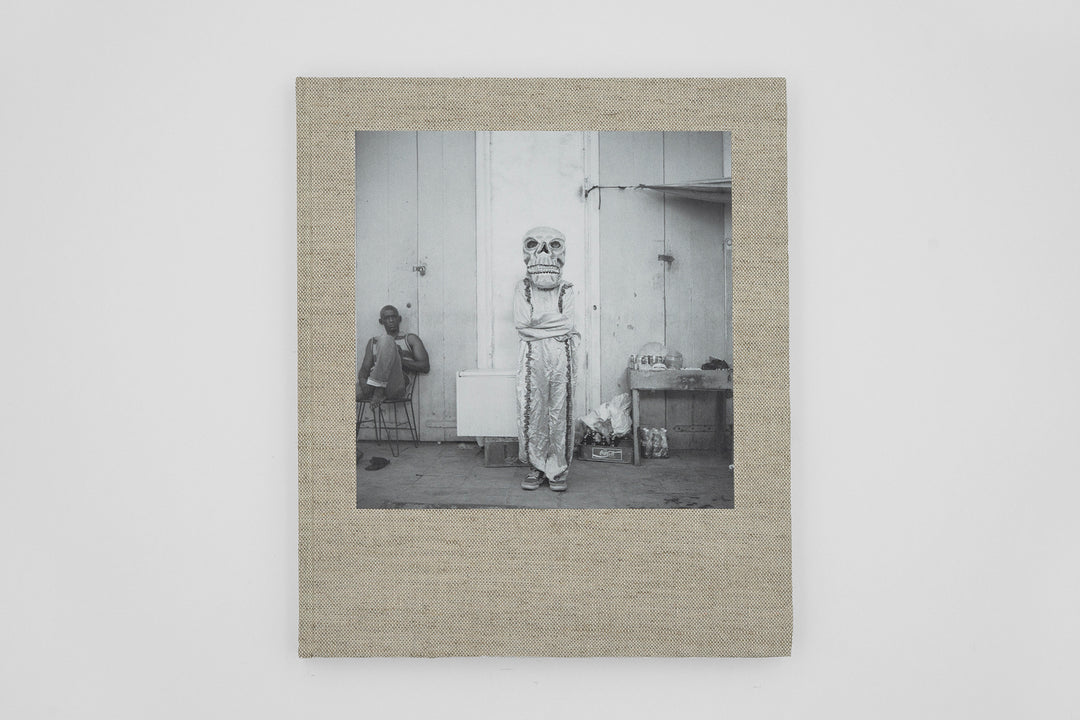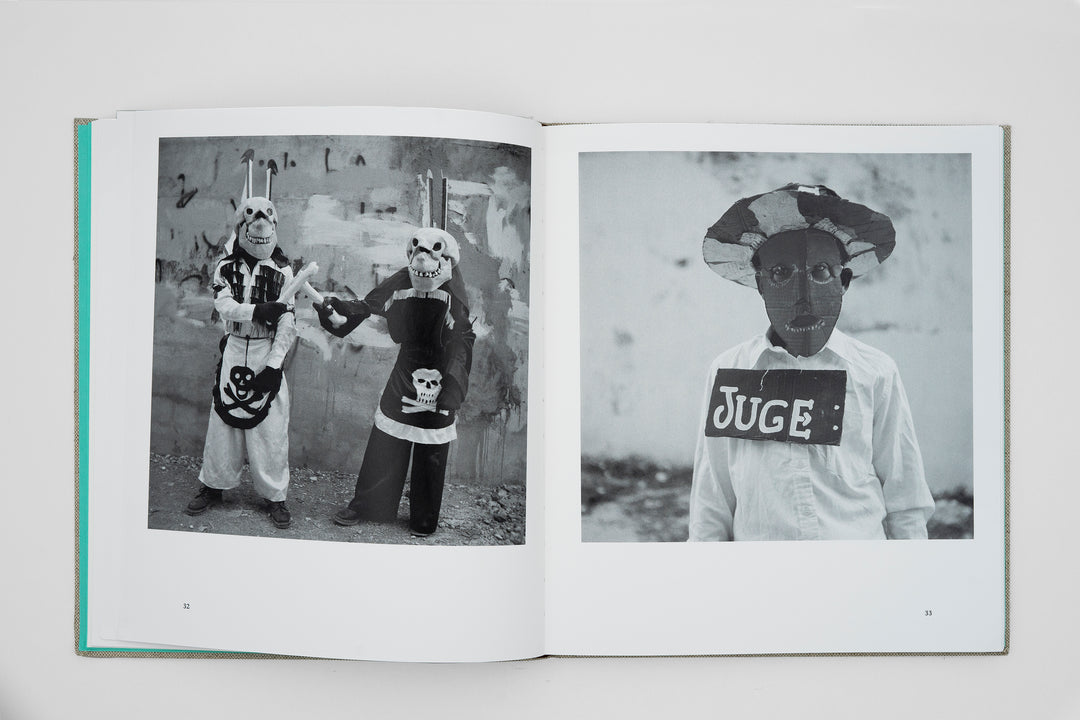






Leagues away from the sequinned, sanitised, corporate-sponsored carnivals found elsewhere in the Americas, the Madigra troupes of the Haitian port town of Jacmel enact and subvert myth, legends and the nation’s own histories, their improvisational costumes and surreal narratives a Vodou-charged blend of folk memory, political satire and personal revelation.
Here the Zèl Maturin, satin-clad devils in papier-mâché masks, hinged wooden wings clapping on their backs, do battle against Sen Michèl Arkanj and his army of pastors; further on the Chaloska in their cows’-tooth-adorned masks transform the feared early twentieth-century police chief Charles Oscar Étienne into a metaphor for the corrupting nature of absolute power.
At the crossroads the horned Lanse Kòd, their skin shining blacker than black with a mixture of cane syrup and charcoal, perform press-ups before running amok through the crowds. Meanwhile a trouser-clad donkey, led by the leaf-skirted Atibruno troupe, speaks into a mobile phone and eats fried plantain, to show the world that the peasants are as good as anyone, that all donkeys are important.
Here too are lone, idiosyncratic characters: Geralda, the single mother of a starving child, the mermaid-in-disguise Madanm Lasirèn, and Bounda pa Bounda, who plays out a Vodou vision revealed by a treetop-dwelling spirit.
Leah Gordon has been photographing Jacmel Carnival and recording oral histories with its participants since 1995. Her photographs in ‘Kanaval’ are stripped of kinesis and exuberance. She uses a sixty-year-old Rolleicord medium-format twin-lens-reflex camera, and shoots onto black and white negative film. The camera is mechanical, and once the film is loaded the shutter has to be physically cocked and the exposure set manually. She always asks permission and pays the participants for the chance to photograph them. A consensual reciprocity between the photographer and the sitter arises which leaves behind the commotion of the street and enters the more tranquil territory of a portrait studio. The time and space created allows for some of the historical narratives of the Madigra to seep through.
152pp, 240 x 280 mm, 95 black and white photographs
Hard back, cloth bound with tipped in photograph (front) and white foil title (spine & back)
Design by Ben Weaver Studio
Here Press 2021, Second edition